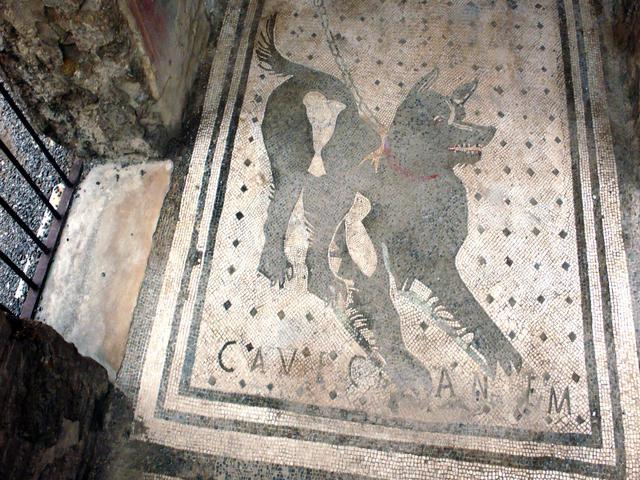House of the tragic poet

The House of the Tragic Poet is one of the most well-known and visited sites in the ancient city of Pompeii. This ancient Roman house, which dates back to the 2nd century BC, is a prime example of a traditional Roman atrium house. The house gets its name from a mosaic located at the entrance that reads "CAVE CANEM" which translates to "beware of the dog". This mosaic is now protected by glass to ensure its preservation for future generations to admire.
Upon entering the House of the Tragic Poet, visitors are greeted by a stunning peristyle that leads to the atrium and tablinum. The atrium and tablinum are adorned with exquisite mosaics, including one depicting actors preparing for a play, which is believed to be the inspiration behind the house's name. The attention to detail in the decoration of the living room is truly remarkable, with large mythological paintings adorning the walls. One notable painting depicts the scene of Ariadne abandoned by Theseus, while another showcases the "Sale of Cupids", a popular theme in the 19th century.
One of the highlights of the House of the Tragic Poet is the small aedicula located in the peristyle. This aedicula, known as the lararium, is a common feature in Roman houses and is dedicated to the cult of the Lares and other protective deities of the family. The original mosaics and paintings from the house are now housed in the National Archaeological Museum of Naples, where visitors can see them up close and appreciate their beauty and historical significance.
Interestingly, part of the novel "The Last Days of Pompeii" by Edward Bulwer-Lytton is set in the House of the Tragic Poet, adding to the allure and mystique of this ancient dwelling. As visitors explore the well-preserved rooms and marvel at the intricate mosaics and paintings, they can't help but feel transported back in time to the days of ancient Pompeii. The House of the Tragic Poet is a must-see attraction for anyone interested in Roman history and archaeology, offering a glimpse into the daily life and culture of the ancient Romans.
© ChatGPT 3.5